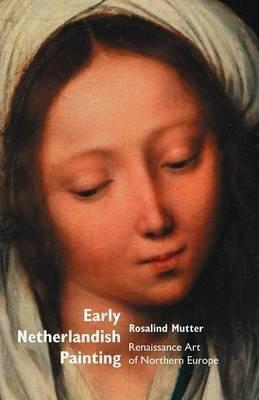Early Netherlandish Painting: Renaissance Art of Northern Europe

Early Netherlandish Painting: Renaissance Art of Northern Europe
EARLY NETHERLANDISH PAINTING A fully illustrated survey of Early Netherlandish painting, featuring all of the major artists, and many lesser-known painters. Early Netherlandish painting, also known as Flemish painting, is characterized by figurative realism, its incredible sense of domestic interiors and details, luminous light, its 'realist' faces, and its fusions of a micro- and macro- cosmic vision. We concentrate here on painters such as Rogier van der Weyden (1400-1464), Jan van Eyck (c. 1390-1441, commonly described as the founder of modern oil painting), Gerard David (c. 1460-1523), Hugo van der Goes (1440-1482), Hans Memling (1433-1494), Joos van Cleve (c. 1485-1540), Jan Gossaert, also called Mabuse (c. 1475/8-1532), Geertgen tot Sint Jans (fl. late 15th 1485/ 95), Quentin Massys (c. 1465-1530), Joachim Patinir (c. 1485-1524), Dieric Bouts (c. 1415-1475), Petrus Christus (fl. 1442-1473) and Bernard van Orley (c. 1488-1541). One of the most celebrated aspects of Early Netherlandish or Flemish painting is its heartfelt, intense religious emotion. It is this aspect that interests us in this book. The new aesthetic vision of Early Netherlandish art was later applied to still life paintings, satires, landscapes, and portraits, but it is the religious works with which we are concentrating on here. Michelangelo's famous statement about Early Netherlandish art pinpoints the depth of devout feeling found in so much of Northern European art: Flemish painting will, generally speaking, please the devout better than any painting in Italy, which will never cause him to shed a tear, whereas that of Flanders will cause him to shed many... The new vision of Northern European painting which flourished in the 15th century was a combination of a new aesthetic approach to reality, and an intensifying of religious fervour. The new vision aimed at sculptural accuracy, a naturalistic use of lighting, and three-dimensionality. Mixed with the new use of oil paint, the new vision gave the art of Philip the Good's reign a special flavour and style well suited to the circumscription of devout religious truths. The new painting inherited its jewel-like brilliancy partly because many painters were trained as goldsmiths. This skilled handling of metalwork and miniature illustration shows in Early Netherlandish art. All Early Netherlandish paintings were made on wood panels, and painted from light to dark in thin glazes. It is partly this subtle glazing which giv
PRP: 190.05 Lei
Acesta este Prețul Recomandat de Producător. Prețul de vânzare al produsului este afișat mai jos.
171.04Lei
171.04Lei
190.05 LeiIndisponibil
Descrierea produsului
EARLY NETHERLANDISH PAINTING A fully illustrated survey of Early Netherlandish painting, featuring all of the major artists, and many lesser-known painters. Early Netherlandish painting, also known as Flemish painting, is characterized by figurative realism, its incredible sense of domestic interiors and details, luminous light, its 'realist' faces, and its fusions of a micro- and macro- cosmic vision. We concentrate here on painters such as Rogier van der Weyden (1400-1464), Jan van Eyck (c. 1390-1441, commonly described as the founder of modern oil painting), Gerard David (c. 1460-1523), Hugo van der Goes (1440-1482), Hans Memling (1433-1494), Joos van Cleve (c. 1485-1540), Jan Gossaert, also called Mabuse (c. 1475/8-1532), Geertgen tot Sint Jans (fl. late 15th 1485/ 95), Quentin Massys (c. 1465-1530), Joachim Patinir (c. 1485-1524), Dieric Bouts (c. 1415-1475), Petrus Christus (fl. 1442-1473) and Bernard van Orley (c. 1488-1541). One of the most celebrated aspects of Early Netherlandish or Flemish painting is its heartfelt, intense religious emotion. It is this aspect that interests us in this book. The new aesthetic vision of Early Netherlandish art was later applied to still life paintings, satires, landscapes, and portraits, but it is the religious works with which we are concentrating on here. Michelangelo's famous statement about Early Netherlandish art pinpoints the depth of devout feeling found in so much of Northern European art: Flemish painting will, generally speaking, please the devout better than any painting in Italy, which will never cause him to shed a tear, whereas that of Flanders will cause him to shed many... The new vision of Northern European painting which flourished in the 15th century was a combination of a new aesthetic approach to reality, and an intensifying of religious fervour. The new vision aimed at sculptural accuracy, a naturalistic use of lighting, and three-dimensionality. Mixed with the new use of oil paint, the new vision gave the art of Philip the Good's reign a special flavour and style well suited to the circumscription of devout religious truths. The new painting inherited its jewel-like brilliancy partly because many painters were trained as goldsmiths. This skilled handling of metalwork and miniature illustration shows in Early Netherlandish art. All Early Netherlandish paintings were made on wood panels, and painted from light to dark in thin glazes. It is partly this subtle glazing which giv
Detaliile produsului










